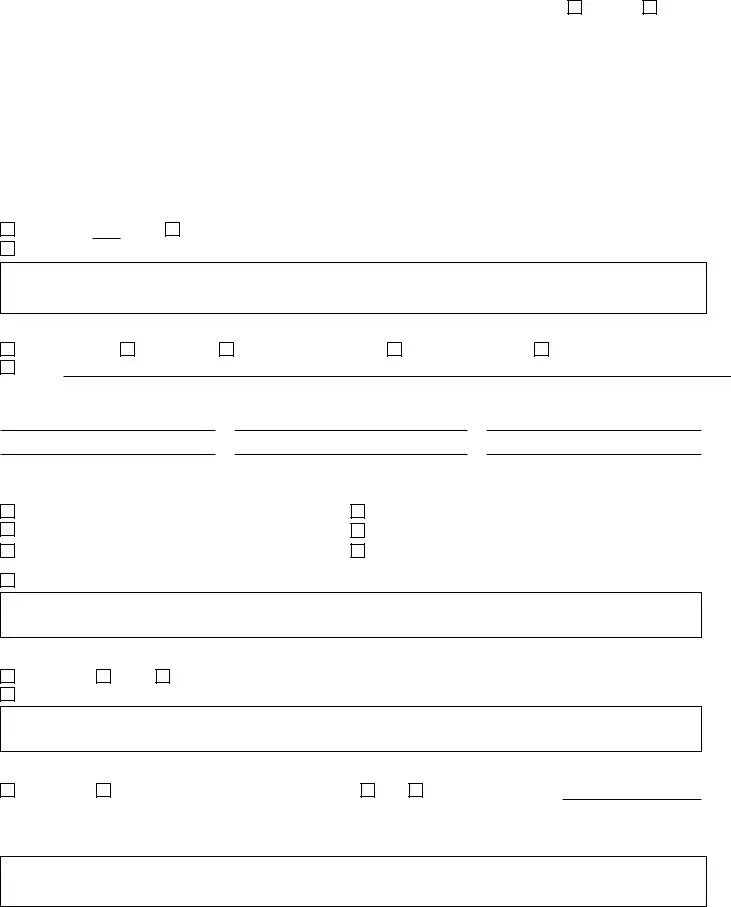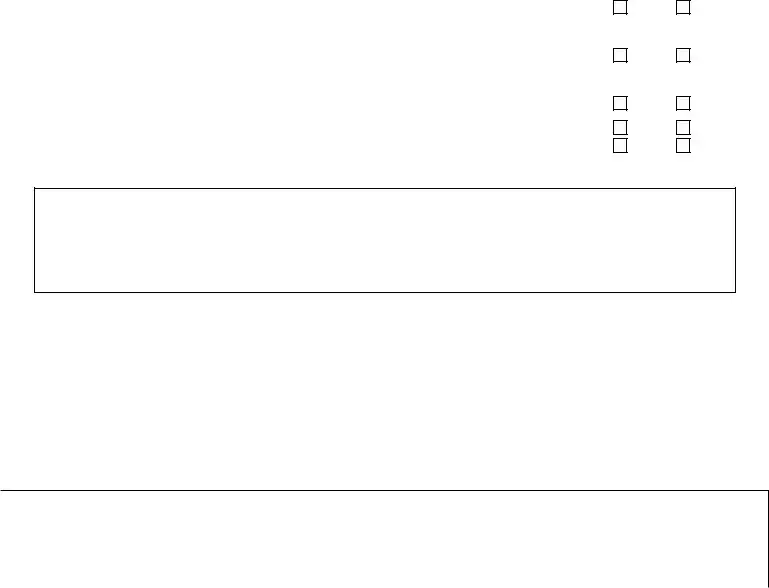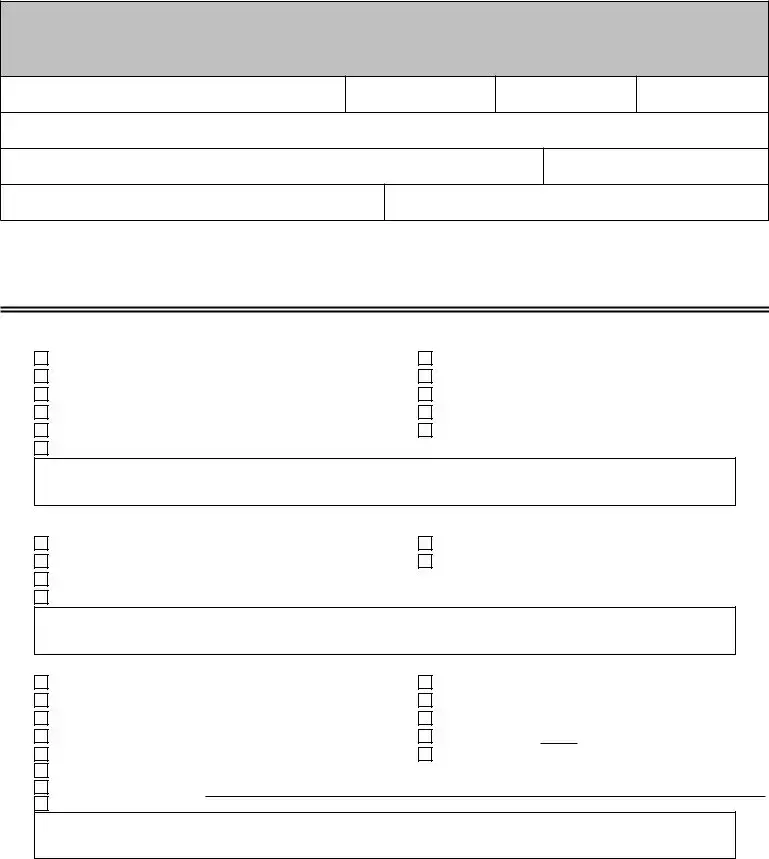
Texas Department of Aging |
Form 3647 |
and Disability Services |
July 2013-E |
Assisted Living Disclosure Statement
The purpose of this Disclosure Statement is to empower individuals by describing a facility's policies and services in a uniform manner. This format gives prospective residents and their families consistent categories of information from which they can compare facilities and services. By requiring the Disclosure Statement, the department is not mandating that all services listed should be provided, but provides a format to describe the services that are provided.
The Disclosure Statement is not intended to take the place of visiting the facility, talking with residents, or meeting one-on-one with facility staff. Rather, it serves as additional information for making an informed decision about the care provided in each facility.
Instructions to the Facility
1.Complete the Disclosure Statement according to the care and services that your facility provides. You may not amend the statement, but you may attach an addendum to expand on your answers.
2.Provide copies of and explain this Disclosure Statement to anyone who requests information about your facility.
Address (Street, City, State, ZIP code)
Date Disclosure Statement Completed
The Assisted Living Licensure Standards are available for review at all assisted living facilities (ALFs).
A copy of the most recent survey report may be obtained from facility management.:
To register a complaint about an assisted living facility, contact:
Texas Department of Aging and Disability Services at 1-800-458-9858
I.Pre-admission Process
A. Indicate services which are not offered by your facility:
Assistance in transferring to and from a wheelchair Bladder incontinence care
Bowel incontinence care
Medication injections
Feeding residents
Other:
Intravenous (IV) therapy
Oxygen administration
Special diets
Behavior management for verbal aggression Behavior management for physical aggression
B. What is involved in the pre-admission process?
Facility Tour
Family interview
Medical records assessment
Other:
Application Home assessment
C. What services and/or amenities are included in the base rate:
|
|
|
|
|
|
|
Meals ( |
|
per day. ) |
|
|
Housekeeping ( |
|
days per week. ) |
Activities program ( |
|
|
days per week. ) |
Incontinence care
Temporary use of wheelchair/walker
Barber/beauty shop
Transportation (specify):
Other:
Special diet Personal laundry Select menus
Licensed nurse ( hours per day. )
Injections
D. What additional services can be purchased?
Beauty/barber services
Incontinence care
Incontinence products
Injections
Other:
Form 3647
Page 2 / 07-2013
Companion
Transportation to doctor visits
Minor nursing services provided by facility staff Home health services
E. Do you charge more for different levels of care? |
Yes |
No |
II. Admission Process |
|
|
A. Does the facility have a written contract for services? |
Yes |
No |
B. Is there a deposit in addition to rent? |
Yes |
No |
If yes, is it refundable? |
Yes |
No |
If yes, when? |
|
|
|
|
|
|
|
C. Do you have a refund policy if the resident does not remain for the entire prepaid period? |
Yes |
No |
If yes, explain? |
|
|
|
|
|
|
D. What is the admission process for new residents? |
|
|
E. Does the facility have provisions for special resident communication needs?
Staff who can sign for the deaf
Other:
Services for persons who are blind
F. Is there a trial period for new residents? |
Yes |
No |
If yes, how long? |
|
|
|
|
|
|
III.Discharge/Transfer
A. What could cause temporary transfer from specialized care?
Medical condition requiring 24–hour nursing care
Drug stabilization
Other:
Unacceptable physical or verbal behavior
Resident requires services the facility does not provide
B. The need for the following services could cause permanent discharge:
24–hour nursing care
Assistance in transferring to and from wheelchair Behavior management for verbal aggression Behavior management for physical aggression Other:
Sitters
Bowel incontinence care Bladder incontinence care Intravenous (IV) therapy
Medication Injections Feeding by staff Oxygen administration Special diets
C. Who would make this discharge decision?
D. Do families have input into these discharge decisions?...................................................................
E. Is there an avenue to appeal these decisions?..............................................................................
F. Do you assist families in making discharge plans? .........................................................................
Form 3647
Page 3 / 07-2013
IV. Planning and Implementation of Care (check all that apply)
A. Who is involved in the service plan process?
Resident |
Family member |
Licensed nurses |
Social worker |
Other: |
|
Activity director Dietary
B. Does the service plan address the following?
Activities of daily living
Other:
C. How often is the service plan assessed?
D. How many hours of structured activities are scheduled per day?
E. What types of programs are scheduled?
F. Who assists/administers medications?
RN
Other:
V. Aging in Place
Department of Aging and Disability Services (DADS) Rules
An inappropriately placed resident is a resident who was appropriate when admitted to the ALF, but whose condition has changed. All residents must be appropriate for the ALF licensure type when admitted to the facility. After admission, if the resident's condition changes, the resident may no longer be appropriate for the facility's license. An ALF is not required to keep a resident who is no longer appropriate for the facility's license.
An inappropriately placed resident may be identified by the ALF or by DADS.
There are two situations which a resident may be determined to be inappropriate:
•Resident experiences a change in condition, needs additional services and meets evacuation criteria.
•Resident experiences a change in condition and does not meet evacuation criteria.
What are the ALF's policies and procedures for aging in place?
Resident experiences a change in condition and meets evacuation criteria. Documentation is submitted to DADS. Resident experiences a change in condition and does not meet evacuation criteria. Waiver request submitted to DADS. No documentation submitted to DADS. Resident is discharged.
An ALF is not required to keep a resident who is no longer appropriate for the facility’s license. A facility will determine its ability to accommodate a resident and decide if it will apply for a waiver request on a case by case basis. DADS rules about inappropriately placed residents may be found in the Licensing Standards for Assisted Living Facilities at 40 Texas Administrative Code Chapter 92, Subchapter 92.41
(f). The following link will direct you to the Licensing Standards for Assisted Living Facilities:
http://www.dads.state.tx.us/handbooks/ls-alf/
VI. Change In Condition Issues
What special provisions do you allow aging in place?
Sitters
Other:
VII. Staff Training
Additional services agreements
Home health -If so, is it affiliated with your facility?
Yes 
 No
No
A. What training do new employees receive?
Orientation: hours
Other:
Review of resident service plan
On–the–job training with another employee: |
|
hours |
|
|
|
|
|
|
Form 3647 |
|
|
|
Page 4 / 07-2013 |
B. Is staff trained in CPR? |
Yes |
No |
|
If no, please explain why you do not require CPR training: |
|
|
|
|
|
|
|
|
|
|
|
|
|
|
|
|
C. How much ongoing training is provided and how often? (Example: 30 minutes monthly): |
|
|
|
|
D. Who gives the training and what are their qualifications? |
|
|
|
|
|
|
|
|
|
|
|
|
|
|
|
|
|
|
|
E. What type of training do volunteers receive? |
|
|
|
|
Orientation: hours
Other:
F. In what type of endeavors are volunteers engaged?
Activities |
Meals |
Religious services |
Other:
G. List volunteer groups involved with the family?
VIII. Physical Environment
A. What safety features are provided in your building?
Emergency call systems
Sprinkler system
Fire alarm system
Other:
Wander Guard or similar system
Built according to NFPA Life Safety Code, Chapter 12, Health Care
Built according to NFPA Life Safety Code, Chapter 21, Board and Care
B. Does the facility's environment include the following?
Vegetable/flower gardens for use by residents
C. Are the residents allowed to have:
Plant's |
Pets -If so, is a deposit required? |
IX. Staffing Patterns
A. What are the qualifications of the manager?
B. Please list the facility's normal 24-hour staffing pattern on:
1.the attached chart; or
2.a separate attachment which explains your facility's unique staffing policies and patterns.
|
|
|
Form 3647 |
|
|
|
Page 5 / 07-2013 |
X. Residents's Rights |
|
|
|
A. Do you have a Resident's Council? |
Yes |
No |
How often does it meet? |
|
|
|
|
|
|
|
|
B. Do you have a Family Council? |
Yes |
No |
How often does it meet? |
|
|
|
|
|
|
|
|
C. Does the facility have a formal procedure for responding to resident grievances and suggestions for improvement?
Is there a Grievance Committee? ...................................................................................................
Is there a suggestion box? ............................................................................................................
D. How can the company that owns the facility be contacted?
Shift Times and Staffing Patterns at the Facility
Full-Time Personnel
|
Shifts |
|
|
|
Number of Staff Per Shift |
|
|
(Enter the hours of |
|
|
|
|
|
|
|
|
R.N.s |
L.V.N.s |
Attendants |
Medication Aides |
Activity Workers |
Universal Workers |
Other Workers |
|
each of your facility's shifts.) |
|
|
|
|
|
|
|
|
|
|
|
|
|
|
|
|
|
|
|
|
|
|
|
|
|
|
|
|
|
|
|
|
|
|
|
|
|
|
|
|
|
|
|
|
|
Part-Time Personnel
|
Shifts |
|
|
|
Number of Staff Per Shift |
|
|
(Enter the hours of |
|
|
|
|
|
|
|
|
R.N.s |
L.V.N.s |
Attendants |
Medication Aides |
Activity Workers |
Universal Workers |
Other Workers |
|
each of your facility's shifts.) |
|
|
|
|
|
|
|
|
|
|
|
|
|
|
|
|
|
|
|
|
|
|
|
|
|
|
|
|
|
|
|
|
|
|
|
|
|
|
|
|
|
|
|
|
|
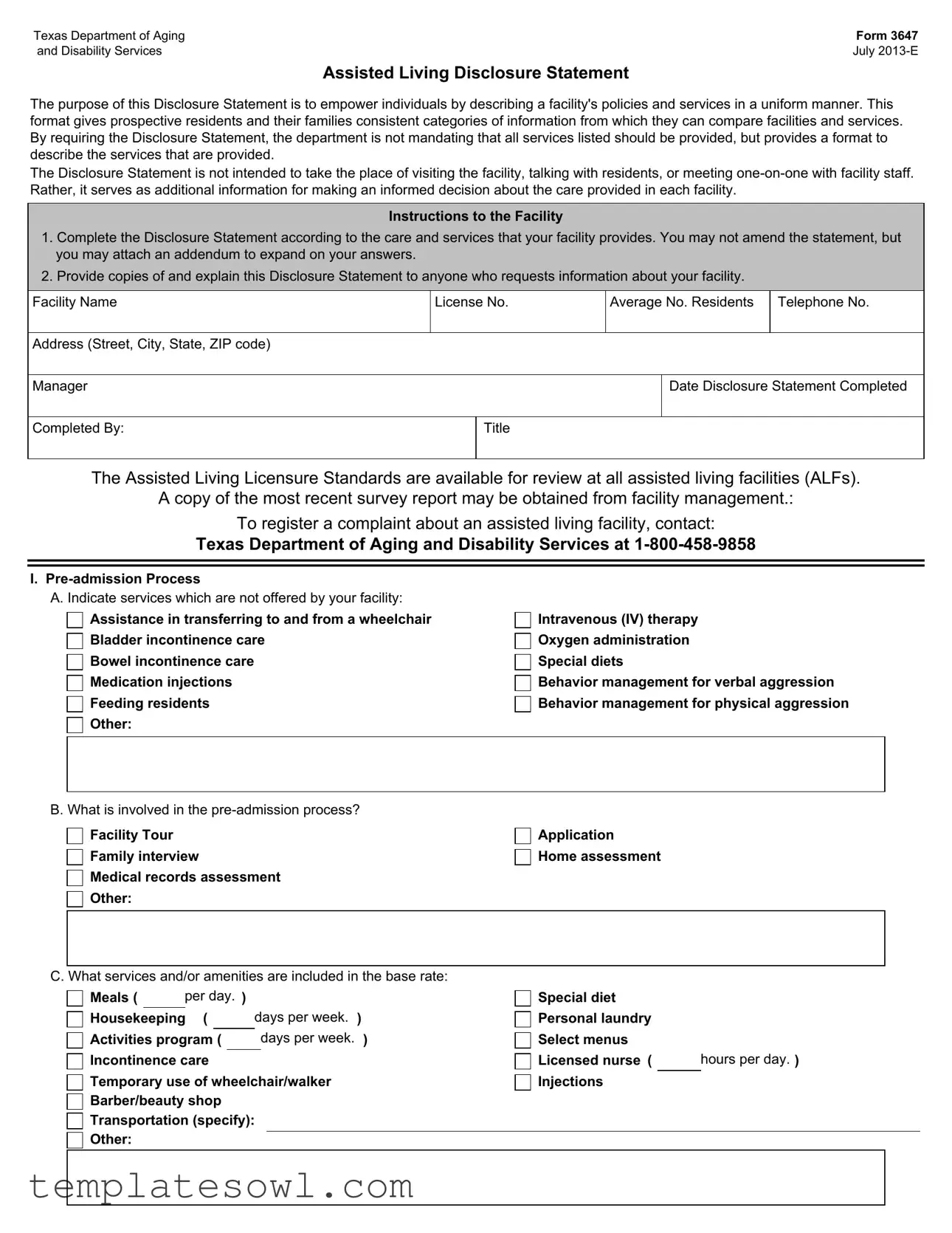

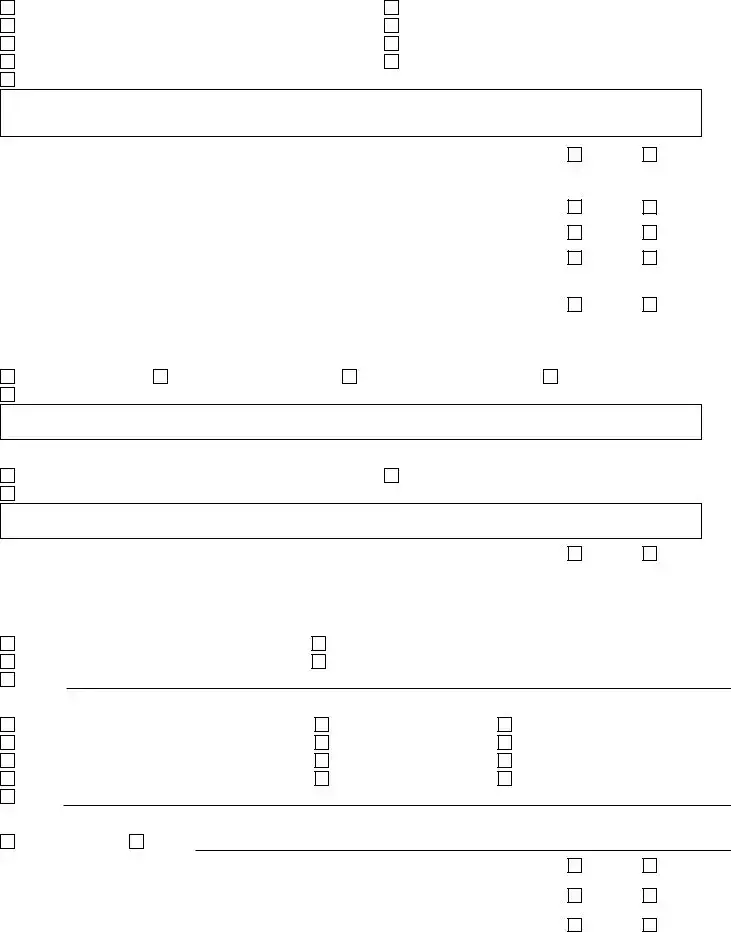


 No
No